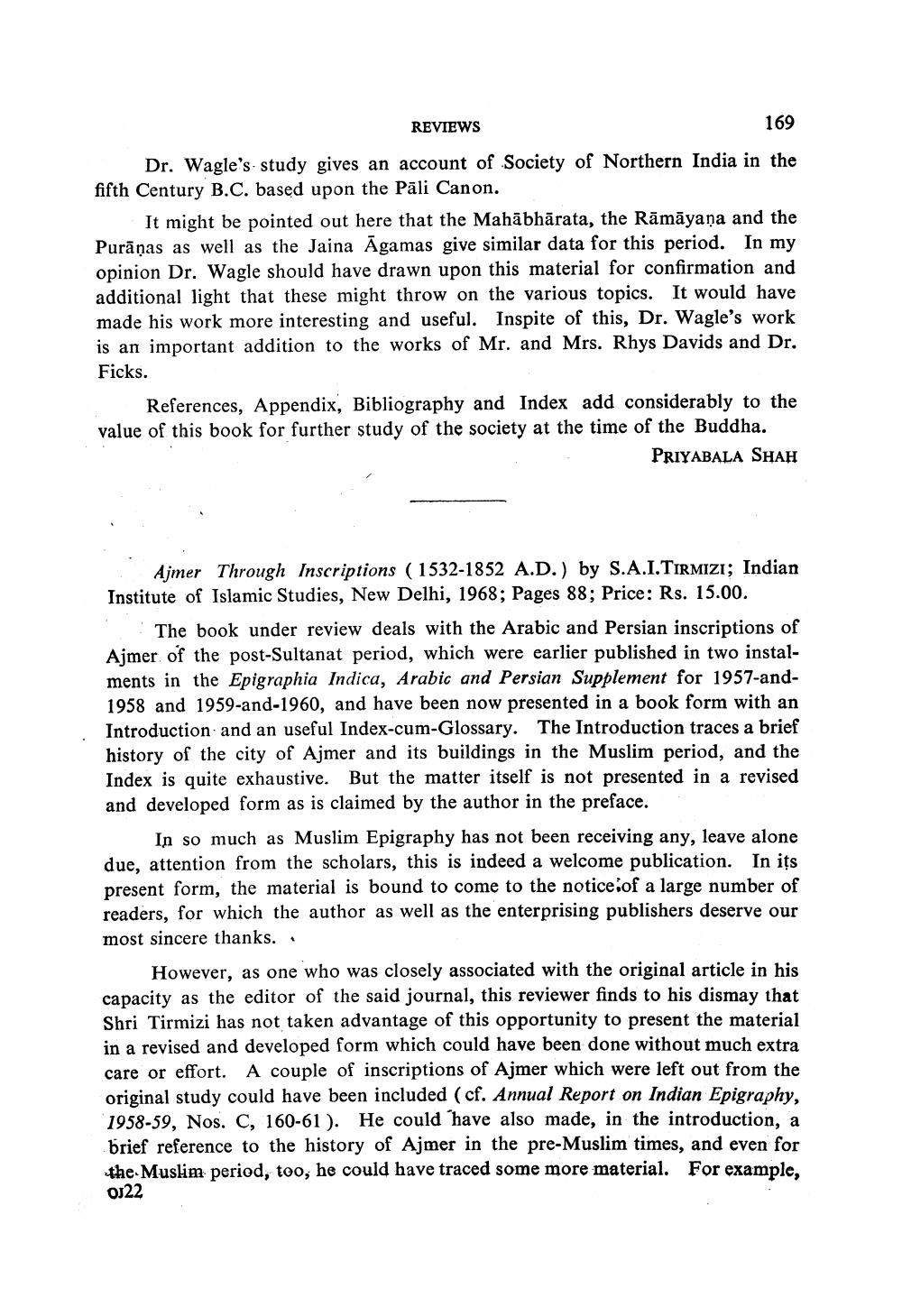Book Title: Reviews Of Studies In Indology Author(s): J S Jetly Publisher: J S Jetly View full book textPage 3
________________ REVIEWS 169 Dr. Wagle's study gives an account of Society of Northern India in the fifth Century B.C. based upon the Pāli Canon. It might be pointed out here that the Mahābhārata, the Rāmāyaṇa and the Purāṇas as well as the Jaina Āgamas give similar data for this period. In my opinion Dr. Wagle should have drawn upon this material for confirmation and additional light that these might throw on the various topics. It would have made his work more interesting and useful. Inspite of this, Dr. Wagle's work is an important addition to the works of Mr. and Mrs. Rhys Davids and Dr. Ficks. References, Appendix, Bibliography and Index add considerably to the value of this book for further study of the society at the time of the Buddha. PRIYABALA SHAH Ajmer Through Inscriptions ( 1532-1852 A.D.) by S.A.I.TIRMIZI; Indian Institute of Islamic Studies, New Delhi, 1968; Pages 88; Price: Rs. 15.00. The book under review deals with the Arabic and Persian inscriptions of Ajmer of the post-Sultanat period, which were earlier published in two instalments in the Epigraphia Indica, Arabic and Persian Supplement for 1957-and1958 and 1959-and-1960, and have been now presented in a book form with an Introduction and an useful Index-cum-Glossary. The Introduction traces a brief history of the city of Ajmer and its buildings in the Muslim period, and the Index is quite exhaustive. But the matter itself is not presented in a revised and developed form as is claimed by the author in the preface. In so much as Muslim Epigraphy has not been receiving any, leave alone due, attention from the scholars, this is indeed a welcome publication. In its present form, the material is bound to come to the notice of a large number of readers, for which the author as well as the enterprising publishers deserve our most sincere thanks. However, as one who was closely associated with the original article in his capacity as the editor of the said journal, this reviewer finds to his dismay that Shri Tirmizi has not taken advantage of this opportunity to present the material in a revised and developed form which could have been done without much extra care or effort. A couple of inscriptions of Ajmer which were left out from the original study could have been included (cf. Annual Report on Indian Epigraphy, 1958-59, Nos. C, 160-61). He could have also made, in the introduction, a brief reference to the history of Ajmer in the pre-Muslim times, and even for the Muslim period, too, he could have traced some more material. For example, OJ22Page Navigation
1 2 3 4 5 6 7 8 9
